Like many people, my first introduction to the witch goddess Holda was through folklore. I don’t remember if I ever read Grimm’s fairy tale Mother Holda before I moved to Germany. But one of my first purchases in Germany was a book of folk tales local to where I lived. My reasoning was that I could translate the tales as a learning activity, and then my husband and I could go and visit the places mentioned in the tales.
The book, Es Spukt in Franken by Michael Pröttel begins with a tale about Frau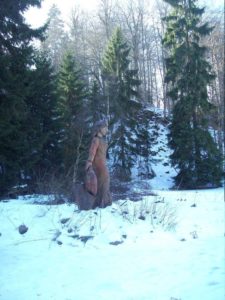 Hulle set not far from Wintersbach. And this is the tale that led me down the rabbithole so to speak. First came the spinning, and then more research and a pilgrimage of sorts to the Hollenteich up on the Hoher Meißner. There, on a frozen pond before a modern statue, I had a deeply holy (and unexpected) experience.
Hulle set not far from Wintersbach. And this is the tale that led me down the rabbithole so to speak. First came the spinning, and then more research and a pilgrimage of sorts to the Hollenteich up on the Hoher Meißner. There, on a frozen pond before a modern statue, I had a deeply holy (and unexpected) experience.
Experience led to more research, and my experience upon that mountain sparked roughly a decade of research. In many ways, my forthcoming book, Elves, Witches, and Gods: Spinning Old Heathen Magic in Modern Day is the fruit of that decade (and more).
But the tales I encountered in Franconia and Hessen aren’t the most famous. That distinction goes to the tale retold by Jacob and Wilhelm Grimm, and it’s this tale and its deathly themes that we’re going to take a look at today.
Down the Well with Mother Holda
Perhaps you’ve heard this tale before?
It begins with a girl and a cruel stepmother who is forced to labor while her step-sister sits idle. This girl is industrious and kind, conscientious and good.  But one day, while spinning at the side of a well, she accidentally drops her spindle into the well after pricking her finger.
But one day, while spinning at the side of a well, she accidentally drops her spindle into the well after pricking her finger.
Her stepmother is consistent in her cruelty, and orders her into the well to retrieve the lost spindle. Terrified and filled with despair, the girl jumps into the well expecting to find death in the dark watery depths.
But there is no death for the girl (maybe). Instead, she finds another world in which she is asked to complete a series of tasks. After completing these tasks, she encounters the scary-looking figure of Mother Holda. Unlike her stepmother, Mother Holda is fair and treats her kindly. She gives her a home and the girl performs her chores with diligence.
And that is where we’re going to leave the retelling of this tale – at least in this blog post. The rest is not necessary for our discussion here.
Mother Holda’s Origins
A lot of words have been written about the origins of Mother Holda and her related beings. (If you’re interested, you can find some of them here.) But those are not the origins I’m going to look at today.
The portion of the tale recounted above can be found in Kinder- und Hausmärchen gesammelt durch die Brüder Grimm. And although it may appear to be the “king’s road” to Holda’s origins (as German scholar Erika Timm puts it). As Professor Timm concludes, that is unfortunately not the case. In all likelihood, Grimm’s Mother Holda is the Germanic version of a fairytale that originated in the Middle East (Timm 7).
So you’re probably wondering why I’m blogging about this tale then?
The answer, friends, is that symbolism and story are far more fluid and complicated than ‘who came up with what first’. And just because a thing came from outside your usual scope, doesn’t mean there aren’t important lessons to be learned.
Spindles, Water, and the Dead
As the girl’s adventure to Holda’s meadow begins with a spindle, this is where we will also begin. Because in many ways, the spindle acts like a key to Holda’s realm. Would the girl have found that meadow had she not followed a spindle and simply thrown herself in? We cannot say. But the fact her step-sister  made sure to cut herself and throw a spindle into the well before she herself took the plunge is perhaps telling.
made sure to cut herself and throw a spindle into the well before she herself took the plunge is perhaps telling.
Spindles are symbolically rich across the Indo-European world, often connecting the living with the under and/or other worlds. European folklore is full of tales of otherworldly yarn and ghosts appearing as bloody balls of wool. For the ancient Hittites, a group of beings known as the Kattereš were said to spin the fates of kings from the underworld. For the Greeks, the dead were pulled down to Hades by means of the ‘snares of death’. And there is one mention of ‘Hel Ropes’ in Norse literature (Giannakis, “Fate-as-Spinner” I&II)
Whether snares or ropes though, it should be noted that both forms of ligature were the end product of something spun.
Water is also suggestive of a transition from the ThisWorld of the living to whatever lies beyond. As Norwegian scholar, Eldar Heide points out in Holy Islands and the Otherworld: Places Beyond Water, stories of the dead departing over water to their final destination are not uncommon in Northwestern Europe. And even where the journey to the afterlife takes place along some kind of Hel road, there is still typically a body of water that must be crossed.
Finally, we must consider the symbolism of the well itself. Most obviously, the well is a passage that leads down into the depths of a watery place. Some see parallels here with the birth canal. But the well has also served as a site for human sacrifice throughout the ages too (“Human Sacrifices?”).
Trials of Character
So whichever way you cut it, the girl was both symbolically and physically plunging to her death. But we do not see her die. Instead, she wakes up in a meadow and finds herself subjected to what might be thought of as trials of character. And it is here that I see a parallel between the afterlife journey of the girl in Mother Holda, and the journey described in the old song A Lyke Wake Dirge
A Lyke Wake Dirge is an old song, designed to be sung over a corpse. Thematically, the song both guides the dead to the afterlife and describes the tribulations along the way.
 First the dead pass over a thorny moor (‘Whinny muir’) that will prick them. Then they must pass over the ‘Brig o’Dread’. And then finally, because this is a Christian song, they must roast in Purgatory for a while. But at every turn, these tortures can be mitigated by one’s behavior in life. Those who gave the charity of socks and shoes (‘hosen or shoon’) will find socks and shoes to protect them on the thorny moor. Those who gave the charity of food and drink, will not be shrunk and burned by Purgatory’s fires. (The Brig o’Dread is its own challenge, and I’ll be taking a look at it in the next section.)
First the dead pass over a thorny moor (‘Whinny muir’) that will prick them. Then they must pass over the ‘Brig o’Dread’. And then finally, because this is a Christian song, they must roast in Purgatory for a while. But at every turn, these tortures can be mitigated by one’s behavior in life. Those who gave the charity of socks and shoes (‘hosen or shoon’) will find socks and shoes to protect them on the thorny moor. Those who gave the charity of food and drink, will not be shrunk and burned by Purgatory’s fires. (The Brig o’Dread is its own challenge, and I’ll be taking a look at it in the next section.)
Here, as in the story of Mother Holda, the dead must pass through trials that test their character. In both A Lyke Wake Dirge and Mother Holda though, it is their charity and generosity that is tested. The girl pulls the bread from the oven and shakes the apples from the tree because they cry out for relief. It is not merely a task to be done.
Bread, Apples, and the ‘Brig o’ Dread’
But what of bread, apples, and this ‘Brig o’ Dread’?
Bread (or the key ingredient, grain) has long played a part in offerings to the dead, both in England and continental Germany. It was a staple food for the living, so we should perhaps not be surprised to find it offered to the dead. The Penitential of pseudo-Egbert and Carloman’s Capitulary of 742 both indicate burnt grains as an offering to the dead (Griffiths, Aspects of Anglo-Saxon Magic, 113).
We may even see a similar transformation to that of the spinning and spun here. The grains offered by the living are the raw material. But it is in the realm of the dead that they reach their final form (just as we do).
This connection with the dead is one that apples share as well. The 11th  century Icelandic poet Þórbjörn Brúnason made a curious mention of the ‘apples of Hel’. And apples also featured as grave goods in both Scandinavian and early English graves. But apples are not only associated with the dead in Norse lore. The apple seems to be both a food for the dead and a substance of renewal for the gods.(Davidson, Gods and Myths of Northern Europe, 165-166).
century Icelandic poet Þórbjörn Brúnason made a curious mention of the ‘apples of Hel’. And apples also featured as grave goods in both Scandinavian and early English graves. But apples are not only associated with the dead in Norse lore. The apple seems to be both a food for the dead and a substance of renewal for the gods.(Davidson, Gods and Myths of Northern Europe, 165-166).
Finally, we come to the Brig o’Dread. This was the bridge that the deceased had to cross on the way to the afterlife. Curiously, given our spinning theme, this bridge of dread was described as being “no broader than a thread” in English folk songs. A similar bridge exists in Slavic lore, only here it is made of hair. Yet as folklorist Mirjam Mencej points out, there is little difference between hair and thread in folk tradition. Lithuanian legends tell of ‘spinning goddesses’ and witches who are wont to spin hair when they run out of flax (Mencej, “Connecting Threads”).
And here, despite our foray from German fairytale to a 14th century English dirge, we return to goddesses of spinning and witches. Funny how that happens, yes?
Uncovering the Imaginal in a Folktale and a Dirge
As we have seen, the themes of these two very different sources share some striking similarities. We tread here, I believe, in the imaginal.
For those of you who are yet to encounter the concept of the imaginal, perhaps the best way of introducing the mundus imaginalis is as something akin to Gaiman’s “The Dreaming”. This is the example that Rhyd Wildermuth gives in his amazing post The Imaginal World over on Gods and Radicals. Though not perfect (as Rhyd goes on to acknowledge), this analogy is both accessible and relevant to our discussion here:
 ”Readers familiar with Neil Gaiman’s Sandman series might find some parallels here: the mundus imaginalis is like “The Dreaming,” a realm populated by the dreaming of every being, living or dead, god or human or plant, where each “place” has a geography only inasmuch as it’s necessary for those who visit to travel within it and find the same place again (or visit a place another once visited). In fact, Gaiman likely stole the entire idea for his cosmology from Corbin’s essay.”
”Readers familiar with Neil Gaiman’s Sandman series might find some parallels here: the mundus imaginalis is like “The Dreaming,” a realm populated by the dreaming of every being, living or dead, god or human or plant, where each “place” has a geography only inasmuch as it’s necessary for those who visit to travel within it and find the same place again (or visit a place another once visited). In fact, Gaiman likely stole the entire idea for his cosmology from Corbin’s essay.”
As previously mentioned, Rhyd does go on to acknowledge some important differences between the imaginal and the “The Dreaming”. But none of those differences affect the point I wish to make here about the nature of the imaginal.
A Revisited Place, A Liminal Place
The road between the land of the living and that of the dead is one that has been encountered and journeyed many times (arguably repeatedly depending on your afterlife beliefs). As with all things imaginal, it is a place none of us have ever seen concretely, but once we catch a glimpse of its representation in song or story, it feels familiar despite its strangeness.
This is also an inherently liminal road – an intermediary state in all senses of the term. And as such, it seems fitting to connect it with the imaginal given the liminal nature of the imaginal itself. To quote Rhyd once more:
“…the imaginal realm, intersects the others (and exists, according to these mystics, at an intersection of all other realms) and is accessed through the imaginal (not imaginary) capacities of humans.”
So we have tales of a liminal passage undertaken by people in a liminal state, being glimpsed in a liminal space.
Most of us who practice magic know the imaginal already. We just tend to call it UPG, SPG (Shared Personal Gnosis), or PVPG (Peer Verified Personal Gnosis).
The Magical Imaginal
When we get down to it, regardless of whether we seek it out for ourselves or rely on the visions of others, these glimpses and encounters with the imaginal lay the foundations for much of what we do. Take the afterlife journey discussed throughout this post, for example. These descriptions give us a kind  of map to this road to the afterlife. First the person dies/passes through water, and then they encounter two different trials. Yet the trials in both sources are far from insurmountable, presenting little problem for the compassionate person.
of map to this road to the afterlife. First the person dies/passes through water, and then they encounter two different trials. Yet the trials in both sources are far from insurmountable, presenting little problem for the compassionate person.
(Remember how the bread in the oven screamed to be removed from the oven and the apples shook from the tree? Those trials were as much about relieving suffering as they were industriousness.)
Finally, the deceased comes to their destination, which varies depending on the underlying belief system. For the Christian dead in the dirge, it is to Purgatory they must go. But for the girl in Mother Holda, it is to live a kinder existence than she did before. She may have worked, but the work was fair. Mother Holda was kind, and the girl never wanted for food.
For those of us who work with the dead, this story and song can provide a useful model for necromancy and psychopomp work. The song itself is easily adaptable for both Heathen and Christian alike, and the symbolism of the bread and apples in the tale of Mother Holda leads us to handy suggestions for offerings.
See how easy that was?
We began this post with a story and a song, and we’re ending with the bare bones of ritual for guiding the dead along the road to/from the afterlife.
And this is the thing, when you find those glimpses in poems/songs/folk tales/ the writings of mystics/in that space between wakefulness and dream, the magic usually isn’t all that far behind.
Sources
Davidson, Hilda Ellis – Gods and Myths of Northern Europe
Giannakis, George – The “Fate-as-Spinner” motif: A study on the poetic and metaphorical language of Ancient Greek and Indo-European (parts I & II)
Griffiths, Bill – Aspects of Anglo-Saxon Magic
Heide, Eldar – Holy Islands and the Otherworld: Places Beyond Water
Mencej, Mirjam – Connecting Threads
National Museum – Human Sacrifices?
Rumens, Carol – Poem of the Week: A Lyke Wake Dirge
Timm, Erika – Frau Holle, Frau Percht und verwandte Gestalten: 160 Jahre nach Jacob Grimm aus germanistischer Sicht betrachtet

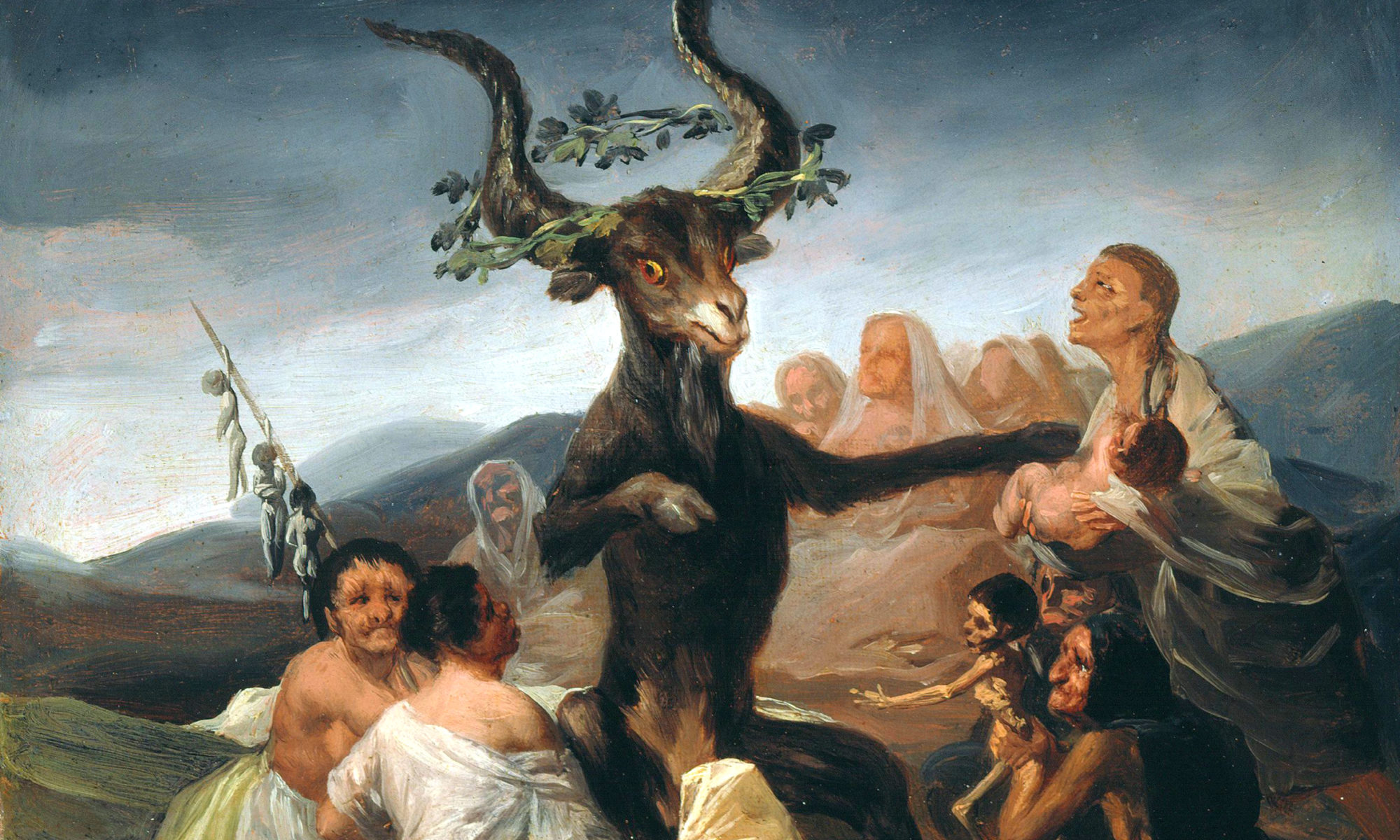
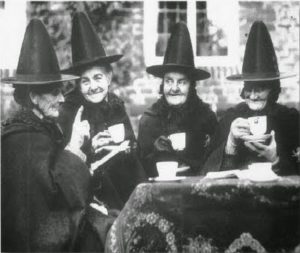 the power of loneliness, I guess. And I was lonely back then. I was a lone witch living in the kind of place people would shout threats at me on the street for being a witch (which they’d seemingly discerned from my general vibe as opposed to me being out of the broom cupboard).
the power of loneliness, I guess. And I was lonely back then. I was a lone witch living in the kind of place people would shout threats at me on the street for being a witch (which they’d seemingly discerned from my general vibe as opposed to me being out of the broom cupboard).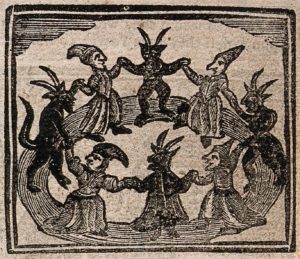 the fairy royalty or devilish figure to whom they are ultimately pacted (Wilby 84, 85). For the Early Modern person, it was the familiar that made the witch, but that familiar (though often appearing as a solitary figure),
the fairy royalty or devilish figure to whom they are ultimately pacted (Wilby 84, 85). For the Early Modern person, it was the familiar that made the witch, but that familiar (though often appearing as a solitary figure), 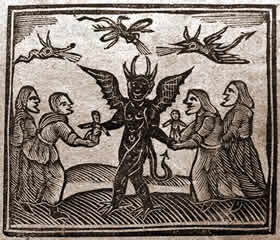 whose testimony we get the first attestation of the word ‘coven’), bears little resemblance to this more modern familial imagining. Where members of modern covens center their bonds with each other, it is the otherworldly power to whom each witch (and familiar) is pledged that is at the center of any group or proceedings in the historical sources (Wilby 81). This is about the familiar rather than the familial, and rather than protecting her ‘sisters’ at any cost as an Owens would, Isobel named the members of her group in her testimony (apparently without the use of torture to loosen her lips). Which can seem quite treacherous until you consider that for her, her main loyalty was probably not to any humans at all.
whose testimony we get the first attestation of the word ‘coven’), bears little resemblance to this more modern familial imagining. Where members of modern covens center their bonds with each other, it is the otherworldly power to whom each witch (and familiar) is pledged that is at the center of any group or proceedings in the historical sources (Wilby 81). This is about the familiar rather than the familial, and rather than protecting her ‘sisters’ at any cost as an Owens would, Isobel named the members of her group in her testimony (apparently without the use of torture to loosen her lips). Which can seem quite treacherous until you consider that for her, her main loyalty was probably not to any humans at all.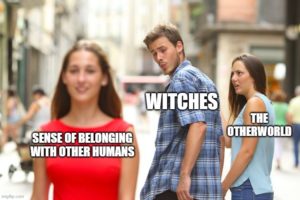 occurred that I believe we need to pay attention to here.
occurred that I believe we need to pay attention to here. 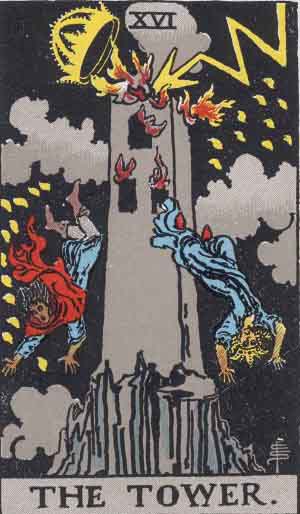
 employees, and grocery store clerks (among others, please forgive me if I missed you).
employees, and grocery store clerks (among others, please forgive me if I missed you).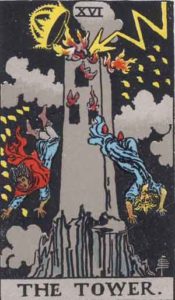 People have been writing about ‘The Storm’ and
People have been writing about ‘The Storm’ and  offerings.
offerings.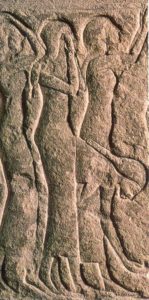 a couple of weeks, we’re going to have a lot of dead people. And these are people who are going to have passed in terrifying, lonely circumstances. I already personally know one person with the story of only being able to say goodbye to a dying relative over FaceTime because they could not risk allowing family members to be with the dying because of the risk of infection.
a couple of weeks, we’re going to have a lot of dead people. And these are people who are going to have passed in terrifying, lonely circumstances. I already personally know one person with the story of only being able to say goodbye to a dying relative over FaceTime because they could not risk allowing family members to be with the dying because of the risk of infection.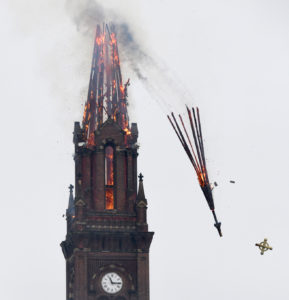
 rising of the Pleiades. Moreover, their Beltane disappearance coincided with the yearly disappearance of the Pleiades from the night sky. It seemed a little too coincidental, especially when the characters you’re writing are Gentry who worship the ‘Seven Queens’.
rising of the Pleiades. Moreover, their Beltane disappearance coincided with the yearly disappearance of the Pleiades from the night sky. It seemed a little too coincidental, especially when the characters you’re writing are Gentry who worship the ‘Seven Queens’. As outlandish as all of this may seem, this is not so different from the kind of otherworldly interest in creative types recorded in older sources. The storytelling bard has become the TV show writer, artists who may have painted scenes from Fairy while locked up in Bedlam, now create digitally, and famous Fairy-Firkler Morgan Daimler has been pointing out the weird waves of disinformation about Themselves online for a while.
As outlandish as all of this may seem, this is not so different from the kind of otherworldly interest in creative types recorded in older sources. The storytelling bard has become the TV show writer, artists who may have painted scenes from Fairy while locked up in Bedlam, now create digitally, and famous Fairy-Firkler Morgan Daimler has been pointing out the weird waves of disinformation about Themselves online for a while. their own Pagan period peers. Yes, as unjust as a monstrous read is when it comes to figures like Medusa and Circe, that’s probably how many people at the time probably saw them.
their own Pagan period peers. Yes, as unjust as a monstrous read is when it comes to figures like Medusa and Circe, that’s probably how many people at the time probably saw them. If there’s one thing about the underlying ‘string-pullers’ of Hellier, it’s that the history doesn’t quite add up – at least not in the usual way. Greg is sent a pdf of The Rebirth of Pan: Hidden Faces of the American Earth Spirit, a book by a man called Jim Brandon (pseudonym). It’s a wild ride through archaeology, conspiracy theory, cryptozoology, paranormal phenomena, and Crowley. Rather than the Ancient Greek figure, the ‘Pan’ spoke of in this book (a being which the author argues is actually the conscious, collective identity of the earth/contained within the earth) is an aggregate term, a way of naming what the author believes to be manifestations of this consciousness of/within the earth.
If there’s one thing about the underlying ‘string-pullers’ of Hellier, it’s that the history doesn’t quite add up – at least not in the usual way. Greg is sent a pdf of The Rebirth of Pan: Hidden Faces of the American Earth Spirit, a book by a man called Jim Brandon (pseudonym). It’s a wild ride through archaeology, conspiracy theory, cryptozoology, paranormal phenomena, and Crowley. Rather than the Ancient Greek figure, the ‘Pan’ spoke of in this book (a being which the author argues is actually the conscious, collective identity of the earth/contained within the earth) is an aggregate term, a way of naming what the author believes to be manifestations of this consciousness of/within the earth.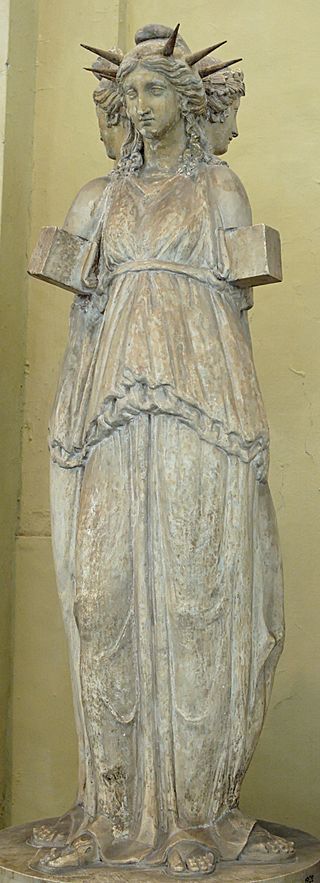 kid’ on the block. Based on what I’ve seen so far of this new kid, I’m pretty sure the ‘old kids’ aren’t too happy with it. Something – a collection of beings in a trench coat masquerading as something else is trying to come onto their turf. And as humans, the creators and consumers of stories that shape the dominant consensus, we’re faced with a choice (another one).
kid’ on the block. Based on what I’ve seen so far of this new kid, I’m pretty sure the ‘old kids’ aren’t too happy with it. Something – a collection of beings in a trench coat masquerading as something else is trying to come onto their turf. And as humans, the creators and consumers of stories that shape the dominant consensus, we’re faced with a choice (another one). I walk. I hear the rush of the water and feel the wind beating against my ears.
I walk. I hear the rush of the water and feel the wind beating against my ears. Christian alike.
Christian alike. practices like that though, if I’m being honest.)
practices like that though, if I’m being honest.) in my heart even, and search them out with my eyes.
in my heart even, and search them out with my eyes. too.
too. than clickbait masquerading as a so-called ‘enlightened’ and pro-science point about wider society. It was a collection of cheap shots against groups of people who already face discrimination in society. Rather than emerging as a ‘defender of science’, Ceri Bradford cast herself as the ‘mean girl’ that would be more at home in a schoolyard picking on the kid she hopes can’t fight back.
than clickbait masquerading as a so-called ‘enlightened’ and pro-science point about wider society. It was a collection of cheap shots against groups of people who already face discrimination in society. Rather than emerging as a ‘defender of science’, Ceri Bradford cast herself as the ‘mean girl’ that would be more at home in a schoolyard picking on the kid she hopes can’t fight back.
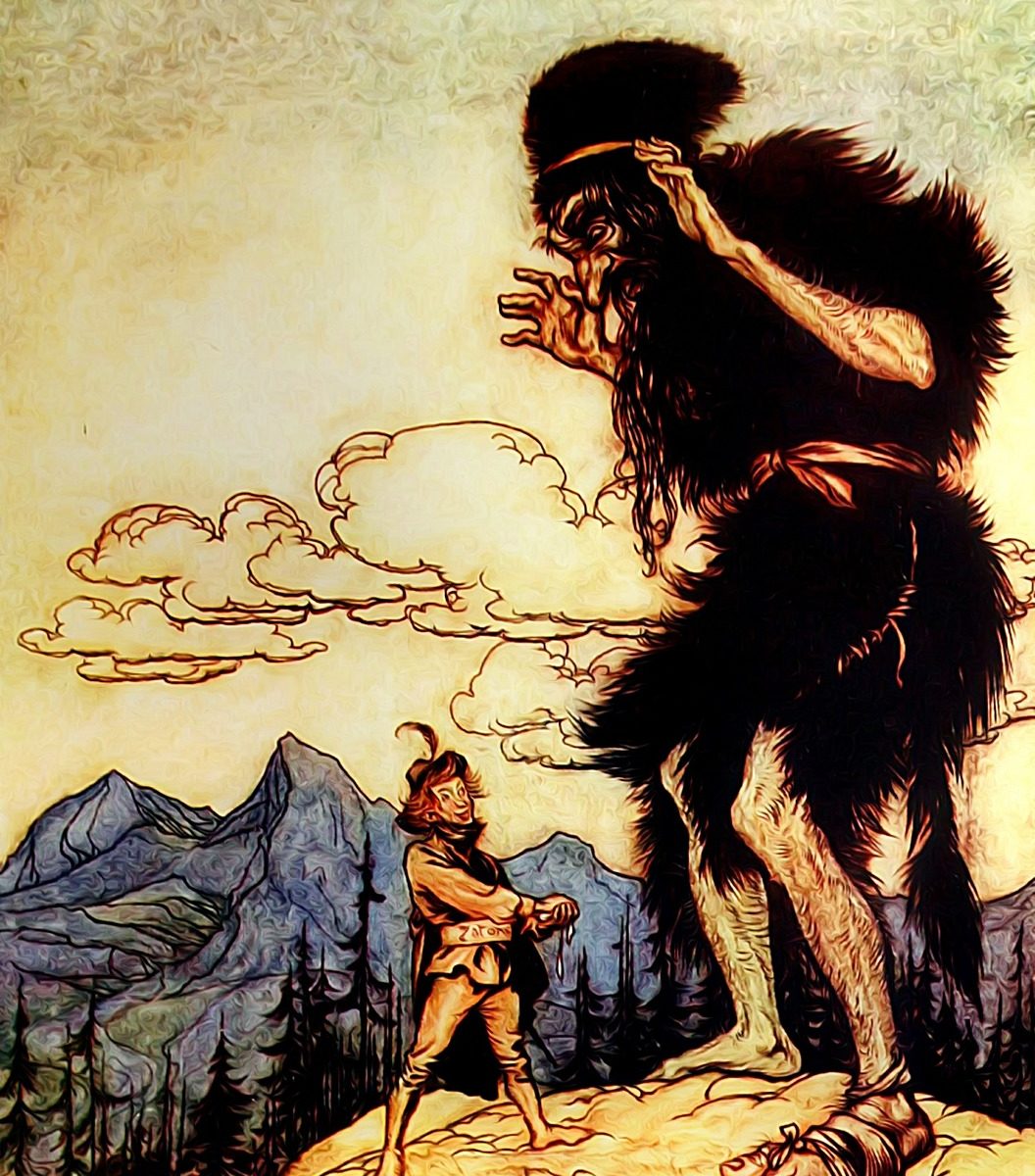
 book”, or “just a story”. Storytelling, in whichever form it takes, is inherently magical. It is the mirror that shows us who we are, shadows and all. But most importantly, it can be an agent for change. Especially when millions of people become emotionally invested in a story.
book”, or “just a story”. Storytelling, in whichever form it takes, is inherently magical. It is the mirror that shows us who we are, shadows and all. But most importantly, it can be an agent for change. Especially when millions of people become emotionally invested in a story. created through mysterious and deadly processes in order to fight the otherworldly and monstrous on the Continent. It sounds like the stereotypical D&D dungeon crawl (but on TV), right?
created through mysterious and deadly processes in order to fight the otherworldly and monstrous on the Continent. It sounds like the stereotypical D&D dungeon crawl (but on TV), right? cops on Black people for having the audacity to have a BBQ.
cops on Black people for having the audacity to have a BBQ.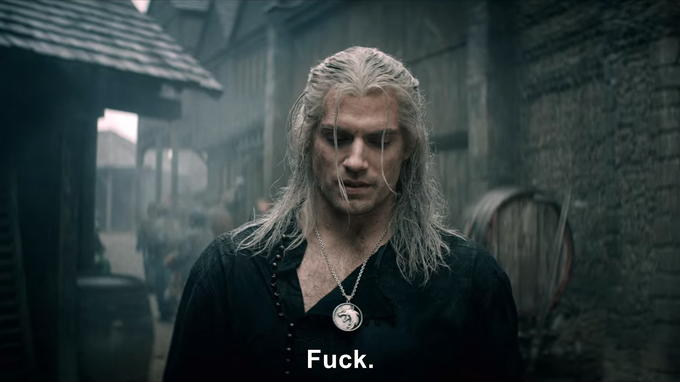 have become the person people go to for clearings at around the age of nineteen, but it really didn’t start there for me. I was very…popular…with all manner of beings as a kid, and a good percentage of them were quite harmful. So it’s a work in progress, and a lot of dealing with the old shadow baggage.
have become the person people go to for clearings at around the age of nineteen, but it really didn’t start there for me. I was very…popular…with all manner of beings as a kid, and a good percentage of them were quite harmful. So it’s a work in progress, and a lot of dealing with the old shadow baggage. oppression or seeking the ruination of human souls. There wasn’t even anything even vaguely chthonic about this ‘demon’ either, and the only bowels involved were the bowels that live inside my body.
oppression or seeking the ruination of human souls. There wasn’t even anything even vaguely chthonic about this ‘demon’ either, and the only bowels involved were the bowels that live inside my body.

 one talks about the labor of birthing the next generation, the countless hours spent clothing families and producing textiles to sell, or how it was the work of women that created the sails that drove the ships and
one talks about the labor of birthing the next generation, the countless hours spent clothing families and producing textiles to sell, or how it was the work of women that created the sails that drove the ships and 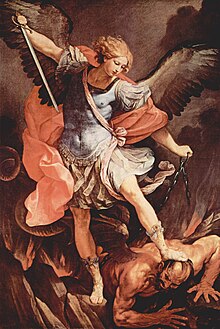 Moreover, I found that others had also experienced some degree of high strangeness since finishing the season. Tweets of strange and sometimes frightening dreams as well as synchronicities began to hint that the phenomena hadn’t ended with the final credits. A friend who had also witnessed the Michael possession I mentioned in my last Hellier blog messaged me out of the blue about Michael, and when I asked her if she’d seen Hellier, she had no idea what it even was.
Moreover, I found that others had also experienced some degree of high strangeness since finishing the season. Tweets of strange and sometimes frightening dreams as well as synchronicities began to hint that the phenomena hadn’t ended with the final credits. A friend who had also witnessed the Michael possession I mentioned in my last Hellier blog messaged me out of the blue about Michael, and when I asked her if she’d seen Hellier, she had no idea what it even was.
 the team to let them know they were taking part in an initiatory ritual writ large (as well as a hypersigil, but we’ll get to that later).
the team to let them know they were taking part in an initiatory ritual writ large (as well as a hypersigil, but we’ll get to that later). For my own part, I find it curious that the residents of Pulaski county (the location of Somerset) are so well-represented in the local mental health institution, and I see a parallel here with the delusions associated with the more mental symptoms of elf affliction recorded in the Old English magico-medical journals. That’s not to say they are what we would call elves (although some of their style of communication as relayed through Connor, with their use of color and weighty words, did remind me of some of my own experiences communicating with elves). However again, there is no way to know this.
For my own part, I find it curious that the residents of Pulaski county (the location of Somerset) are so well-represented in the local mental health institution, and I see a parallel here with the delusions associated with the more mental symptoms of elf affliction recorded in the Old English magico-medical journals. That’s not to say they are what we would call elves (although some of their style of communication as relayed through Connor, with their use of color and weighty words, did remind me of some of my own experiences communicating with elves). However again, there is no way to know this. underworld of the US as he had when working as a ‘tunnel rat’ hunting Viet-cong. His performance of the Star Sapphire ritual (as well as the blue star balloons that showed up), is quite fascinating when considered from this perspective.
underworld of the US as he had when working as a ‘tunnel rat’ hunting Viet-cong. His performance of the Star Sapphire ritual (as well as the blue star balloons that showed up), is quite fascinating when considered from this perspective. writes:
writes: